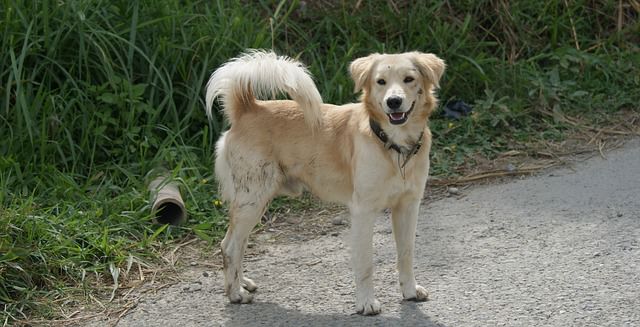Humans are not as tuned in to body language as dogs are, but we have all seen dogs pace back and forth. They can pace in the house or in a yard or even the car. The reasons can vary. One thing is for sure, pacing is a very specific behavior that is repetitive and sometimes difficult to distract from. It can be annoying, but understanding the reasons might help you be less annoyed and maybe even find a plan to change it.

Let me out!
Some dogs will pace near a home exit if they want to be let outside. They know that they want to eliminate outside, but something is stopping them. Either the door is closed or there is an impediment, like a baby gate keeping them from doing what they want. They want you to know that they have a need and it is growing. He is trying to tell you to open the door and you might want to listen!
Anxiety
Sometimes pacing is an expression of nervous energy. We see this behavior in zoo animals that are kept in enclosures. This kind of pacing is more methodical and less insistent. Many captive animals pace along the borders of the habitats. They are potentially anxious and bored because they are restrained and feel vulnerable since they are wild animals. Our dogs are not exactly wild, but pacing can still be an outlet for nervous energy. It can even be a sign of true anxiety disorder. If you notice that pacing is happening every time you look, ask your vet if there is something to be done.

Anticipation
When your dog has learned your cues that lead up to something that she likes, she might pace in excitement and anticipation. Pacing is not always a bad thing. It could be positive energy that says, “I can hardly WAIT for what I know you are doing!” This kind of pacing should stop as soon as the awaited event occurs and will usually be accompanied by a happy and excited body posture.
Patrolling territory
Some animals walk back and forth along the boundaries of their yards or territories as a “patrol.” Our dogs can take their job as a sentinel guard very seriously and they love routines. Their routine may involve a perimeter pace just to make sure all is well and satisfy any curiosity outside the borders. It can make them feel safer to know that all is well from the outside of the realm to the inside and the pacing is just a part of their routine.
Dog owners usually are adept at reading their own dogs, so if notice your dog pacing, examine the other cues of her body language to see if she is expressing insistence, frustration, excitement or routine. Remember, if you notice the pacing at an excessive level (especially if it is accompanied by other repetitive behaviors, like circling or self mutilating) get help from your veterinarian. It could be a sign of something else and your dog needs help.
Do you love dogs and wonder why about them? I post animal stuff on my Facebook page several times a day.
Look for me by clicking here.
